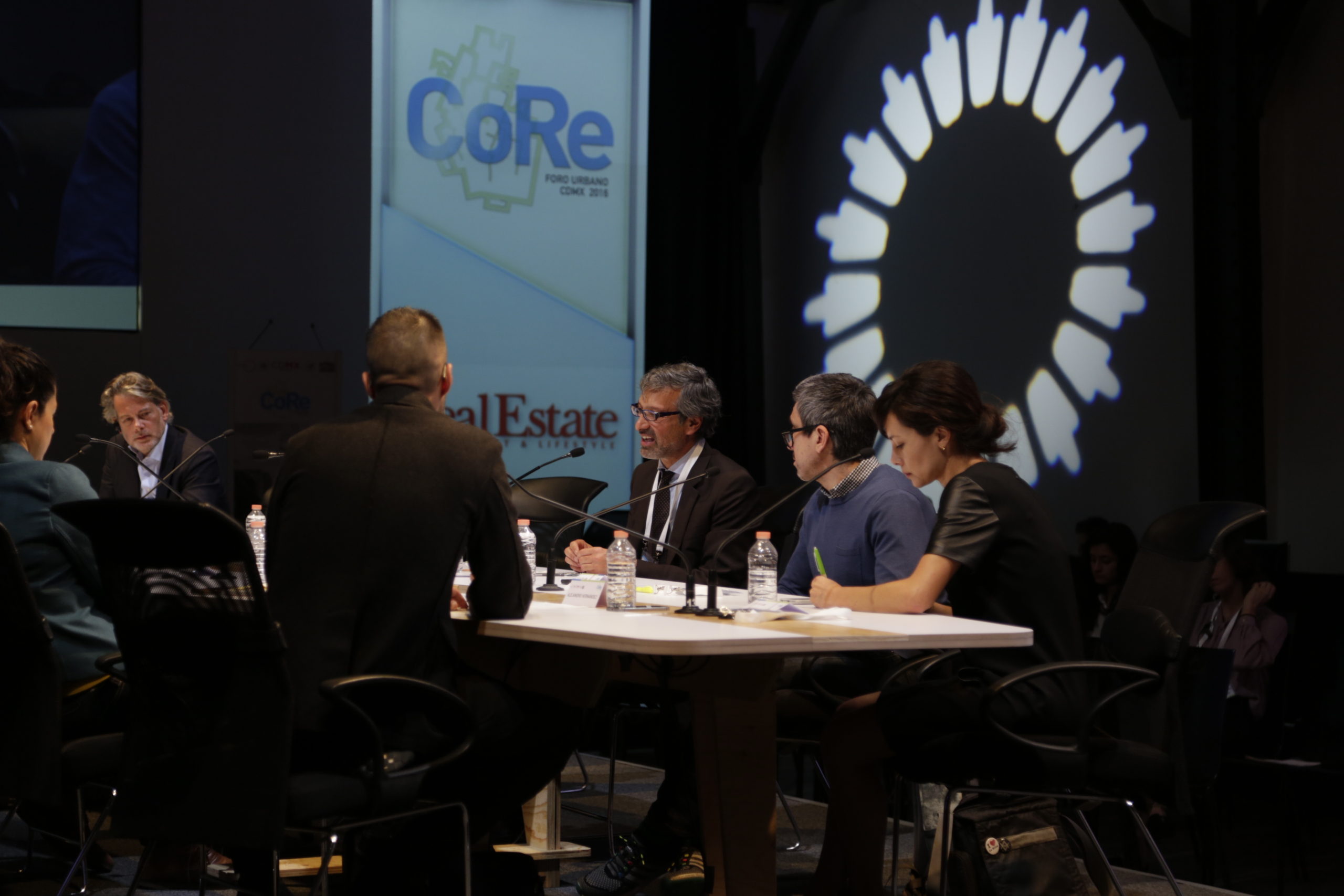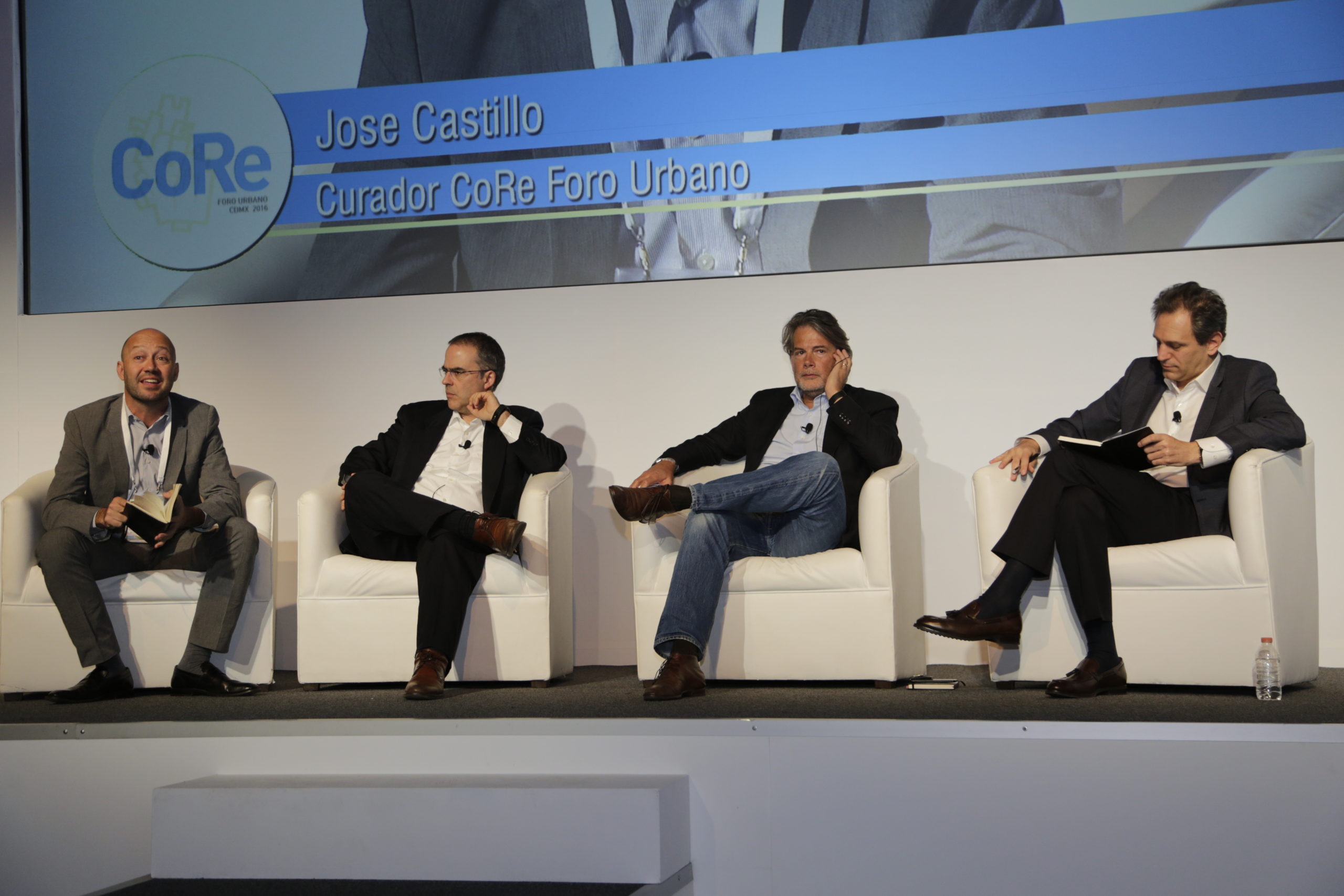Future cities must be planned in alliance between government, private sector and citizens
- The new Mexico City International Airport is under construction, with the world’s biggest parking lot planned with capacity for 20,000 cars. However, when it is finished, planners will realize cars are not as important as once thought.
- Mexico City is overwhelmed by housing construction.
Mexico City, December 7, 2016.- Academics, specialists, entrepreneurs and authorities took part in the third roundtable of CoRe Urban Forum CDMX 2016, to discuss Zoning and the diverse city. All of the participants concurred that the cities of the future need to be planned through an alliance between government, private sector and the public.
Maria Buhigas, from Barcelona’s Urban-Facts, explained that cities represent a vision of a public space and stated that “we always talk about what is on the sidewalk, but not what lies underneath; we need to think beyond the project”, while highlighting Barcelona as an example of this.
Salomón Chertorivski, head of Mexico City’s Secretariat Economic Development, invited the audience to think of the Paseo de la Reforma “not as a longitude axis, but as a connecting avenue”. He added that we need to ask ourselves what conditions need to be in place to allow citizens to live near their workplaces. On the other hand, he highlighted that, while 9 million people live within the borders of Mexico City, 15-16 million use the city every day, leading to some obvious questions such as where people are living and working.
Concerning the airport, he said that 710 hectares of its planned area remained unattributed, providing an opportunity to think about “the future of the city” lies in this space. «We must plan the future” he affirmed. “The new International Airport for Mexico City is under construction, with the world’s biggest parking lot with capacity for 20,000 cars. However, by the time they finish, they will realize cars are not the most important thing, so they will need to rethink”.
According to Felipe de Jesus Gutiérrez, Secretary of Housing and Urban Development (SEDUVI) for Mexico City, the city loses 80,000 citizens on a yearly basis, who move out to nearby areas. In other words, the city is losing its population. “We need to form an urban plan; a draft is under discussion in Mexico City’s Constituent Assembly.” However, for any such plan to work, he stressed the need for common participation from government, private sector and the public.
For Jose Shabot, from the Quiero Casa real estate group, “there are three relevant actors in every project: government, developers and the public”, while stating that entrepreneurs “we work under the law and help generate parks and public spaces”.
Shabot agreed that Mexico City is overwhelmed in terms of housing. Over the past 30 years, Mexico City has doubled its population and increased its urban land sixfold. “Let us not think only about Reforma (for housing construction), but rather about the neighborhoods of Morelos and Guerrero”. He agreed that citizen participation must be required for future projects, and that developing confidence among all actors is needed to see the required level of cooperation.
Regarding bank loans for those seeking to buy or lease properties, Homero Garza from SHF, said that students and undergraduates are excluded from these projects. “There are a lot of people who don’t want any more residential buildings, as there are too many people already crowded in too small a space. However, the problem is that plans for residential buildings have been poorly drawn. For example, in the Nuevo Polanco neighborhood, the model leeks one of the most important thing is to provide infrastructure before building houses”.
For expert Leonardo Martinez, the land use permits for parking spaces need to be reviewed, since they cause a change in the way people live. “We need to think if parking spaces are necessary and where they are best built for interconnectivity”.
Jose Castillo, curator of CoRe Foro Urbano served as moderator for the roundtable, which also counted on the participation of architect Rodrigo Rivero Borrell, who stressed that “cities must be kind to their citizens’ quality of life”.
For Pablo Vaggione, representative of UN Habitat, “the city is a tool for economic development. Mexico has a leading urban agenda to design a compact and prosperous city”.
For urban design expert Ernesto Betancourt, however, “little has been spoken about who will pay for the cities we are picturing”.
Finally, Doug Austin, from AVRP Studios, noted that in the 1970s, schools in the American city of San Diego were built downtown using public funds to improve the quality of life of the public, and to showcase flexibility in planning.








